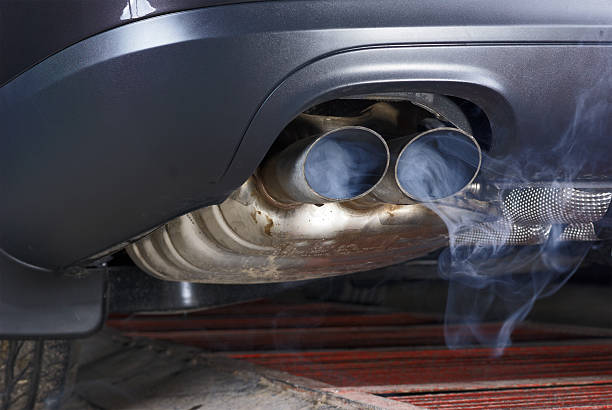December 5, 2023
What metal is best for exhaust?
The choice of metal for an exhaust system depends on several factors, including the intended use, budget, and performance requirements. Common metals used for exhaust systems in automobiles and motorcycles include:
- Mild Steel: Mild steel is often used in stock or factory exhaust systems because it is cost-effective and easy to work with. However, it is not as corrosion-resistant as other materials, so it may not be the best choice for high-performance or long-lasting exhaust systems.
- Stainless Steel: Stainless steel is a popular choice for aftermarket and high-performance exhaust systems. It is highly corrosion-resistant and can withstand high temperatures, making it durable and long-lasting. Stainless steel exhaust systems are also known for their aesthetic appeal due to their shiny appearance.
- Aluminized Steel: Aluminized steel is mild steel coated with a layer of aluminum-silicon alloy, making it more corrosion-resistant than plain mild steel. It is a more affordable alternative to stainless steel and is commonly used in OEM exhaust systems.
- Titanium: Titanium is an excellent choice for high-performance and lightweight exhaust systems. It is extremely corrosion-resistant, durable, and can withstand high temperatures. However, it is also more expensive than other materials, making it less common in everyday vehicles.
The choice of metal for your exhaust system will depend on your specific needs and budget. Stainless steel is often considered the best overall choice for a balance of durability, corrosion resistance, and cost-effectiveness in performance applications. However, if weight reduction and top-tier performance are your primary concerns, titanium may be the best option, though it comes at a higher cost.
Is aluminum or stainless better for exhaust?
Stainless steel is generally considered better than aluminum for exhaust systems in most automotive applications. Here’s why:
- Corrosion Resistance: Stainless steel is highly corrosion-resistant, which is crucial for exhaust systems exposed to moisture, road salt, and other environmental factors. Aluminum can corrode more easily, especially in regions with harsh weather conditions.
- Durability: Stainless steel is more durable than aluminum, making it better suited for withstanding the mechanical stresses and vibrations that exhaust systems experience. Aluminum is a softer metal and can be more prone to damage from impacts or road debris.
- High Temperatures: Exhaust gases can reach very high temperatures, and stainless steel can withstand these temperatures without deforming or weakening. While some high-performance aluminum alloys can handle high temperatures, they are often more expensive and less common for exhaust systems.
- Weldability: Stainless steel is generally easier to weld than aluminum, which can be an important consideration when fabricating exhaust components.
- Aesthetic Appeal: Stainless steel exhaust systems are known for their shiny appearance and resistance to discoloration, which can be desirable for some vehicle owners.
That said, aluminum does have its advantages, particularly in weight savings. Aluminum is significantly lighter than stainless steel, which can be beneficial for performance enthusiasts looking to reduce the overall weight of their vehicle. However, for most vehicles, the durability and corrosion resistance of stainless steel make it the preferred choice for exhaust systems, especially in everyday driving conditions.
Why is aluminum not used for exhaust?
While aluminum is used in various automotive components due to its lightweight properties, it is not as commonly used for exhaust systems for several reasons:
- High Temperatures: Exhaust gases can reach very high temperatures, often exceeding 1,000 degrees Fahrenheit (540 degrees Celsius) in high-performance applications. While there are aluminum alloys that can handle these temperatures, they are less common and more expensive than stainless steel, which is better suited for withstanding extreme heat.
- Corrosion Resistance: Aluminum is susceptible to corrosion, especially in the presence of moisture, road salt, and acidic exhaust gases. Stainless steel is much more corrosion-resistant, making it a more suitable choice for exhaust systems exposed to harsh environmental conditions.
- Durability: Exhaust systems are subject to mechanical stresses, vibrations, and impacts from road debris. Stainless steel is a more durable material, better able to withstand these factors without deforming or weakening over time. Aluminum is softer and more prone to damage from impacts.
- Cost: High-quality aluminum alloys suitable for exhaust systems can be more expensive than stainless steel, which can make aluminum exhaust systems cost-prohibitive for many consumers.
- Welding Challenges: Aluminum can be more challenging to weld than stainless steel, which can complicate the fabrication process for exhaust components.
While there are some high-performance and racing applications where aluminum exhaust systems are used to save weight, they are not as common in everyday vehicles. Stainless steel remains the preferred material for most exhaust systems due to its superior durability, corrosion resistance, and ability to withstand the high temperatures and harsh conditions encountered in exhaust applications.

